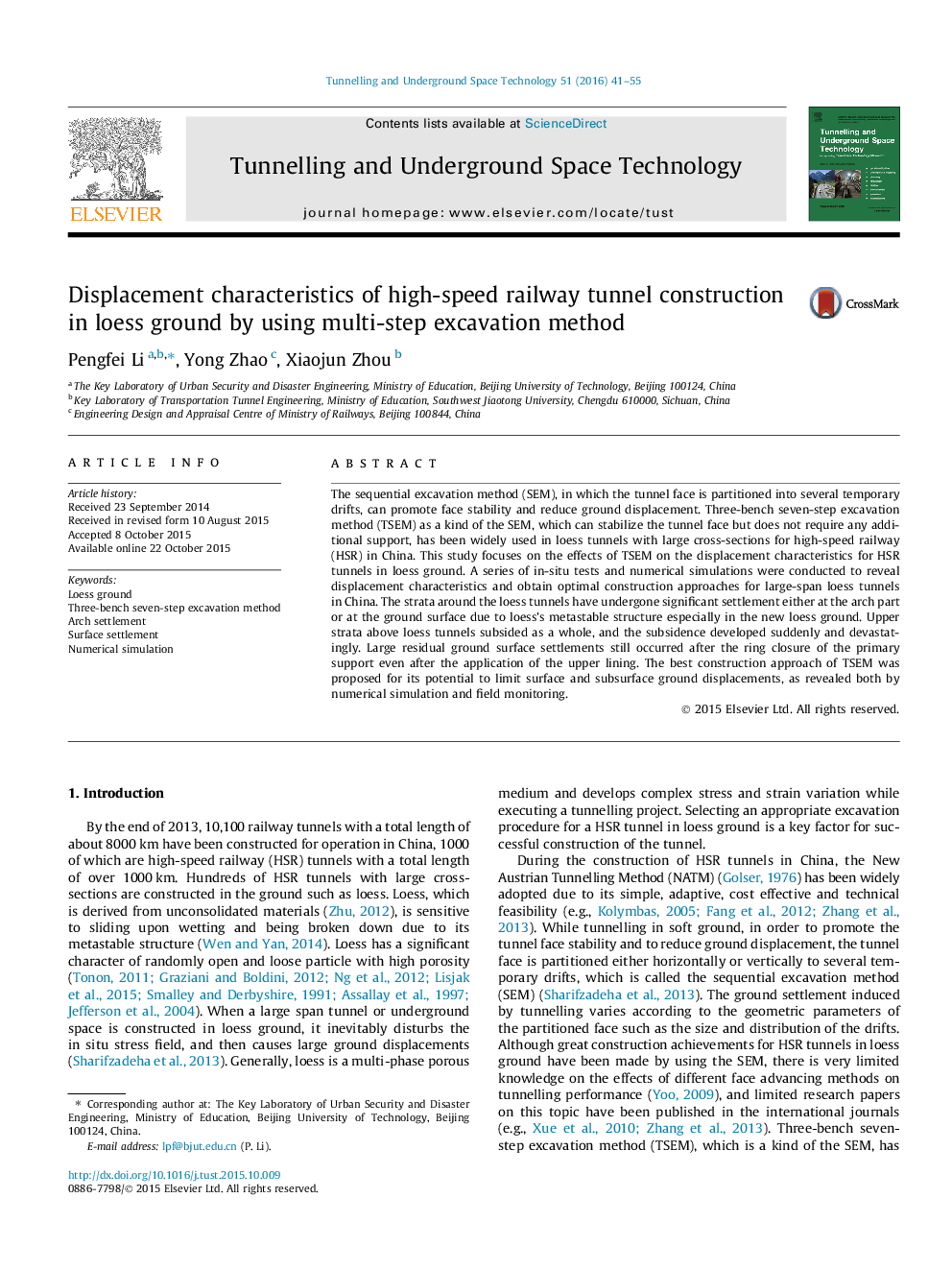| کد مقاله | کد نشریه | سال انتشار | مقاله انگلیسی | نسخه تمام متن |
|---|---|---|---|---|
| 311723 | 534125 | 2016 | 15 صفحه PDF | دانلود رایگان |
• In-situ tests and numerical simulations for loess tunnels were conducted.
• The stratum has an obvious vertical settlement around the loess tunnels.
• Ground surface settlements occurred even after the completion of tunnel construction.
• Numerical simulation is an effective means in predicting ground displacements.
• The ring-cut excavation method can effectively limit the tunnel displacement.
The sequential excavation method (SEM), in which the tunnel face is partitioned into several temporary drifts, can promote face stability and reduce ground displacement. Three-bench seven-step excavation method (TSEM) as a kind of the SEM, which can stabilize the tunnel face but does not require any additional support, has been widely used in loess tunnels with large cross-sections for high-speed railway (HSR) in China. This study focuses on the effects of TSEM on the displacement characteristics for HSR tunnels in loess ground. A series of in-situ tests and numerical simulations were conducted to reveal displacement characteristics and obtain optimal construction approaches for large-span loess tunnels in China. The strata around the loess tunnels have undergone significant settlement either at the arch part or at the ground surface due to loess’s metastable structure especially in the new loess ground. Upper strata above loess tunnels subsided as a whole, and the subsidence developed suddenly and devastatingly. Large residual ground surface settlements still occurred after the ring closure of the primary support even after the application of the upper lining. The best construction approach of TSEM was proposed for its potential to limit surface and subsurface ground displacements, as revealed both by numerical simulation and field monitoring.
Journal: Tunnelling and Underground Space Technology - Volume 51, January 2016, Pages 41–55
